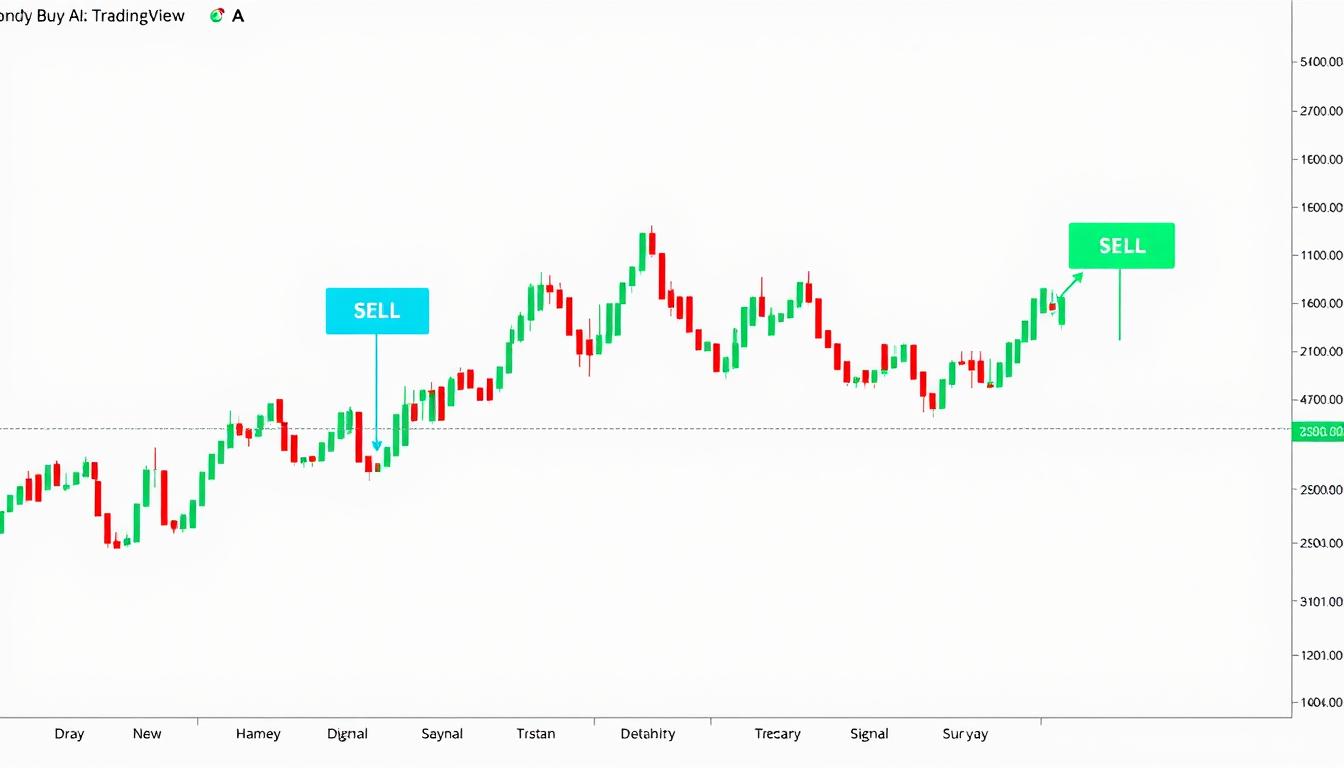Are you wondering if investing in the stock market is a smart move for your financial future? With stocks making headlines in 2025, understanding how they work is more crucial than ever.
When you buy stock in a company, you’re essentially buying a small part of that company. This means you have a claim on a portion of its assets and profits. Over time, the value of your investment can grow, making it a potentially lucrative way to build wealth.
As investors look to grow their money, understanding the basics of stock investing is essential. This guide will walk you through the fundamentals, debunk common myths, and provide a roadmap for navigating the stock market with confidence.
Key Takeaways
- Understand what stocks are and how they represent ownership in a company.
- Learn about the historical performance of stocks as an investment.
- Discover how to navigate the stock market as a beginner.
- Gain insights into common misconceptions about stock investing.
- Develop a strategy for making informed investment decisions with your money over time.
Understanding What Stocks Are
The concept of stock is central to investing, embodying a claim on a portion of a company’s assets and profits. To navigate the world of stock investing effectively, it’s essential to understand what stocks fundamentally are and the rights they confer upon their holders.
Definition and Basic Concepts
A stock represents ownership in a company and gives shareholders a claim on part of that company’s assets and earnings. Stocks are also known as equities, and they are issued by companies to raise capital from investors. When you buy a stock, you’re essentially buying a small portion of that company’s ownership.
Ownership Rights and Responsibilities
Owning stock comes with certain rights and responsibilities. Shareholders have voting rights, allowing them to participate in major company decisions, such as electing the board of directors. They are also entitled to a portion of the company’s profits in the form of dividend payments, if distributed. However, it’s crucial to understand that owning stock does not grant direct control over a company’s day-to-day operations or its company assets. The concept of limited liability protects shareholders, meaning they are not personally responsible for the company’s debts.
Shareholders can influence company decisions through their voting rights, although the extent of their influence often correlates with the percentage of shares they own. Understanding these dynamics is key to making informed investment decisions.
How the Stock Market Works
To succeed in the stock market, one must first comprehend its underlying structure and key components. The stock market is a complex system that facilitates the buying and selling of stocks, allowing companies to raise capital and investors to participate in the growth and profits of businesses.
Stock Exchanges Explained
Stock exchanges are platforms where stock trading occurs. They provide a regulated environment for companies to list their shares and for investors to buy and sell these shares. Major exchanges include the New York Stock Exchange (NYSE) and NASDAQ.
Initial Public Offerings (IPOs)
An Initial Public Offering (IPO) is the process by which a private company becomes publicly traded by issuing stock to the public for the first time. IPOs are significant events as they allow companies to raise capital and provide early investors with liquidity.
Market Participants
The stock market involves various participants, including individual investors, institutional investors, traders, and market makers. Traders buy and sell stock to profit from short-term price movements, attempting to trade and time the market. In contrast, investors typically adopt a long-term approach, holding diversified portfolios through various economic conditions without trying to time the market.
| Market Participant | Description |
|---|---|
| Individual Investors | Private individuals buying and selling stocks for personal accounts. |
| Institutional Investors | Organizations like pension funds, mutual funds, and hedge funds that invest large sums. |
| Traders | Individuals or entities seeking short-term profits from stock price fluctuations. |
| Market Makers | Entities providing liquidity by buying and selling stocks at prevailing market prices. |
Types of Stocks You Should Know
The stock market offers a wide range of investment opportunities, and knowing the types of stocks is key to making informed decisions. Stocks can be categorized based on various characteristics, including ownership rights, investment goals, and company performance.
Common Stock vs. Preferred Stock
Stocks are primarily classified into common stock and preferred stock. Common stock represents ownership in a company and gives shareholders voting rights. Shareholders have the potential to benefit from capital appreciation if the company’s stock price increases. On the other hand, preferred stock has a higher claim on assets and earnings than common stock, typically offering a fixed dividend payment.
| Characteristics | Common Stock | Preferred Stock |
|---|---|---|
| Voting Rights | Yes | No |
| Dividend Payments | Variable | Fixed |
| Claim on Assets | Lower | Higher |
Growth Stocks vs. Value Stocks
Investors often differentiate between growth stocks and value stocks based on their investment goals and risk tolerance. Growth stocks are shares in companies expected to grow at an above-average rate, often characterized by high price-to-earnings ratios and rapid revenue expansion. In contrast, value stocks are shares that trade at a lower price relative to their fundamentals, such as earnings or dividends, making them appealing to value investors.
A growth stock might not pay dividends, as the company reinvests its earnings to fuel further growth. Conversely, value stocks often belong to established companies with higher dividend yields. Understanding the characteristics of each type can help investors make informed decisions based on their investment timeline and risk tolerance.
Why Invest in Stocks?
Investing in stocks can be a strategic move for those looking to grow their wealth over time. Stocks offer a way to own a portion of companies, potentially benefiting from their growth and profitability.
Potential for Long-Term Growth
One of the primary reasons investors are drawn to stocks is their potential for long-term growth. Historically, stocks have outperformed many other investment types over extended periods, making them an attractive option for those looking to build wealth. By investing in a diversified portfolio of stocks, investors can potentially benefit from the growth of various companies and industries.
Dividend Income Opportunities
Many established companies distribute a portion of their earnings to shareholders in the form of dividends. Not all stocks pay dividends, but for those that do, it can provide a regular income stream. Dividends are typically paid quarterly and can be a valuable component of an income-focused investment strategy, especially during retirement. The dividend yield, which is the ratio of the annual dividend payment per share to the stock’s current price, is a key metric for comparing the income potential of different stocks.
| Investment Type | Potential for Growth | Dividend Income |
|---|---|---|
| Stocks | High | Variable |
| Bonds | Low | Regular |
| Real Estate | Medium | Variable |
As Warren Buffett once said, “
Price is what you pay. Value is what you get.
” This quote highlights the importance of understanding the intrinsic value of a stock, beyond its current market price.

Getting Started with Stock Investing
Before diving into stock investing, it’s essential to lay the groundwork by defining your investment objectives. This foundational step will guide your decisions as you navigate the stock market.
Setting Investment Goals
Setting clear investment goals is crucial. Are you saving for retirement, a down payment on a house, or your children’s education? Your goals will influence your investment strategy, including your risk tolerance and time horizon. Be specific about what you want to achieve and by when.
Opening a Brokerage Account
To start investing in stocks, you’ll need to open a brokerage account. This is a straightforward process, with many online brokers offering user-friendly platforms for beginners. When choosing a broker, consider factors like fees, investment options, and customer service. Some popular online brokers for beginners include platforms that offer commission-free trades and educational resources.
Researching and comparing different brokers will help you find the one that best suits your needs. Look for brokers that provide robust customer support and intuitive mobile apps to manage your investments on the go.
Creating Your Investment Budget
Determining how much money to invest in stocks depends on your overall financial situation. It’s wise to invest only what you can afford to lose and what’s not needed for cash reserves or short-term expenses. Many investors opt for equity mutual funds or ETFs for instant diversification. Start with a manageable amount and gradually increase it as your financial situation improves.
Consider your income, expenses, debts, and savings goals when deciding on your investment budget. It’s also essential to balance your stock investments with other financial priorities, such as debt reduction and building an emergency fund.
Building Your First Stock Portfolio
When it comes to building your first stock portfolio, understanding the principles of diversification and asset allocation is essential. A well-crafted portfolio can help you navigate the complexities of the stock market and achieve your long-term financial goals.
Diversification Principles
Diversification is a key strategy in reducing risk and increasing potential returns in your stock portfolio. By spreading your investments across various asset classes, you can mitigate the impact of market volatility. A diversified portfolio typically includes a mix of stocks, bonds, and cash.
For instance, investing in different sectors and geographies can help you ride out market fluctuations. A diversified portfolio might include stocks from various industries, such as technology, healthcare, and finance, as well as international stocks.
Individual Stocks vs. Funds
When building your portfolio, you must decide between investing in individual stocks or funds. Individual stocks offer the potential for high returns, but they also come with higher risks. On the other hand, funds, such as mutual funds or exchange-traded funds (ETFs), provide instant diversification and can be less risky.
As noted by a financial expert, “Investing in a mix of individual stocks and funds can be an effective way to balance risk and potential returns.” You can’t directly invest in the S&P 500, but you can invest in an index fund or ETF that tracks the index, providing broad market exposure.
Asset Allocation Basics
Asset allocation involves dividing your investments among different asset classes based on your investment timeline, risk tolerance, and financial goals. A proper asset allocation strategy can help you achieve your investment objectives while managing risk.
For example, a conservative investor might allocate 40% to stocks, 50% to bonds, and 10% to cash, while an aggressive investor might allocate 80% to stocks, 15% to bonds, and 5% to cash. The historical performance of different asset allocations can provide valuable insights into risk-return tradeoffs.
| Asset Allocation | Conservative | Moderate | Aggressive |
|---|---|---|---|
| Stocks | 40% | 60% | 80% |
| Bonds | 50% | 30% | 15% |
| Cash | 10% | 10% | 5% |
Periodic rebalancing is crucial to maintaining your desired asset allocation as market values fluctuate. By regularly reviewing and adjusting your portfolio, you can ensure that it remains aligned with your investment goals.
Essential Stock Analysis Methods
To navigate the complex world of stock investing, one must master essential stock analysis methods. Stock analysis is crucial for investors to make informed decisions, and there are primarily two approaches used: fundamental analysis and technical analysis.
Fundamental Analysis
Fundamental analysis involves evaluating a company’s financial health, management team, and competitive position in the market to determine its stock’s value. This method considers various factors such as revenue, earnings, and economic conditions to estimate the intrinsic value of a stock. By comparing this intrinsic value with the current stock price, investors can identify potential investment opportunities.
For instance, if a company’s financial statements indicate strong growth prospects but its stock price is currently undervalued, it might be a good time to buy. Fundamental analysis helps investors understand the underlying factors driving a stock’s market performance.
| Indicator | Description | Importance |
|---|---|---|
| Revenue Growth | Rate at which a company’s revenue is increasing | High |
| Earnings Per Share (EPS) | Company’s profit divided by outstanding shares | High |
| Debt-to-Equity Ratio | Indicator of a company’s financial leverage | Medium |
Technical Analysis
Technical analysis, on the other hand, focuses on analyzing statistical trends gathered from trading activity, such as price movements and trading volume, to forecast future prices. This method uses charts and technical indicators like moving averages, support and resistance levels, and trend lines to identify patterns that can predict future stock performance.
Technical analysts believe that historical price movements tend to repeat themselves, and by identifying these patterns, investors can make informed decisions about when to buy or sell a stock. For example, a “golden cross” pattern, where a short-term moving average crosses above a long-term moving average, is considered a bullish signal.
Both fundamental and technical analysis have their strengths and weaknesses. While fundamental analysis provides a deep understanding of a company’s intrinsic value, technical analysis offers insights into market sentiment and potential price movements. Many investors combine these two methods to form a comprehensive view of the market and make better-informed investment decisions over time.
Common Stock Investing Strategies
Understanding different stock investing strategies is crucial for making informed investment decisions. Investors can choose from various approaches based on their financial goals, risk tolerance, and investment horizon.
Buy and Hold Investing
Buy and hold investing is a long-term strategy that involves purchasing stocks and holding onto them for an extended period, regardless of market fluctuations. This approach helps investors ride out market volatility and benefit from the historical upward trend of the stock market. By minimizing the impact of short-term market swings, buy and hold investors can potentially achieve more stable returns over time.
Dollar-Cost Averaging
Dollar-cost averaging is an investment technique that involves investing a fixed amount of money at regular intervals, regardless of the market’s performance. This strategy helps reduce the impact of volatility and timing risks, as it averages out the cost of investments over time. By doing so, investors can avoid the pitfalls of trying to time the market and potentially lower their average cost per share.
Dividend Investing
Dividend investing focuses on stocks that pay dividends, which are regular cash payments from a company to its shareholders. This strategy can provide a steady income stream and potentially lower volatility compared to growth-focused approaches. Key concepts in dividend investing include dividend yield, payout ratio, and dividend growth rate. Investors often look for Dividend Aristocrats and Dividend Kings, companies with a history of consistent dividend increases.
The benefits of dividend investing include income generation, reduced portfolio volatility, and the potential for total returns through both dividends and price appreciation. Tax considerations and strategies like dividend reinvestment plans (DRIPs) can also enhance long-term returns.
| Strategy | Description | Key Benefits |
|---|---|---|
| Buy and Hold | Long-term investment approach | Rides out market volatility, stable returns |
| Dollar-Cost Averaging | Regular fixed investments | Reduces timing risks, averages cost |
| Dividend Investing | Focus on dividend-paying stocks | Steady income, lower volatility |
Avoiding Common Beginner Mistakes
Investing in stocks can be a rewarding venture, but beginners often make mistakes that can be avoided with the right knowledge. Understanding these common pitfalls is crucial for new investors to navigate the stock market effectively.
Emotional Decision Making
One of the most significant mistakes beginners make is allowing emotions to dictate their investment decisions. Fear and greed are powerful emotions that can lead to impulsive decisions, potentially resulting in significant financial losses. For instance, during market downturns, fear might prompt an investor to sell stocks hastily, only to miss out on potential rebounds.
To avoid emotional decision-making, it’s essential to develop a well-thought-out investment strategy and stick to it, even when market volatility triggers emotional responses.
Lack of Research
Another critical mistake is investing without adequate research. Beginners often overlook the importance of understanding the companies they invest in, including their financial health, competitive advantages, and growth potential. Diving into stock investments without research is akin to gambling, as it leaves investors vulnerable to market surprises.
Conducting thorough research involves analyzing financial statements, understanding industry trends, and staying informed about market news. This due diligence can help investors make informed decisions and avoid costly mistakes.
Unrealistic Expectations
Many beginners fall into the trap of expecting unrealistic returns or overnight success from their stock investments. The media often highlights exceptional market performers, creating skewed perceptions of typical investment outcomes. However, it’s crucial to understand that historical returns, such as those of the S&P 500, are averages and not every stock will perform similarly.
| Investment Type | Average Annual Return | Risk Level |
|---|---|---|
| Stocks | 8-10% | High |
| Bonds | 4-6% | Medium |
| Money Market Funds | 2-4% | Low |
Having realistic expectations is vital. Investors should be aware that consistent double-digit returns are rare and usually come with higher risks. Setting realistic goals and adopting a long-term perspective can help investors stay on track and avoid making rash decisions based on short-term market fluctuations.

Conclusion: Your Path to Stock Market Success
The world of stock investing can seem daunting at first, but armed with the right knowledge, you’re poised to make informed decisions that can lead to financial success. The primary reason investors own stock is to build long-term wealth by earning a return on their investment.
As you’ve learned, successful stock investing is a journey that rewards patience, discipline, and continuous learning. It’s not a get-rich-quick scheme but a long-term strategy. Starting small is perfectly fine; the key is to start now, regardless of your current financial situation. By doing so, you’re taking the first step towards securing your financial future and potentially earning money through wise investment decisions.
To deepen your understanding of the stock market and refine your investment strategy, continue learning about different stocks and market dynamics. Historically, investing in the stock market has been one of the most accessible and effective ways for average people to build wealth over time.











